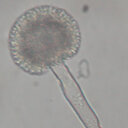Thapsigargin potentiates TRAIL-induced apoptosis in giant cell tumor of bone.
Parole chiave
Astratto
TNF-related apoptosis-inducing ligand (TRAIL) is capable of causing apoptosis in tumor cells but not in normal cells; however, it has been shown that certain types of tumor cells are resistant to TRAIL-induced apoptosis. In this study, we examined the potentiation of TRAIL-induced apoptosis in the stromal-like tumor cells of giant cell tumor of bone (GCT). We show that both mRNA and protein of TRAIL receptors-death receptors (DR4, DR5) and decoy receptors (DcR1, DcR2) are present in GCT stromal tumor cells. However, the expression profiles in all GCT clones tested do not readily correlate with their differential sensitivity to TRAIL. To this end, we selected thapsigargin (TG), an agent known to cause perturbations in intracellular Ca(2+) homeostasis to enhance the apoptotic action of TRAIL. When added alone, neither TRAIL nor TG induces a therapeutically important magnitude of cell death in GCT tumor cells. Interdependently, scheduled treatment of the cultures with TG followed by subsequent addition of TRAIL resulted in a significant synergistic apoptotic activity, while in contrast, no obvious augmentation was seen when TRAIL was added before TG. This effect was in accord with our observation that TG predominantly up-regulated both mRNA and protein expression of DR5, as well as DR4 mRNA while down-regulating DcR1 protein in GCT stromal-like tumor cells. Taken together, our findings suggest that TG is able to sensitize tumor cells of GCT to TRAIL-induced cell death, perhaps in part through up-regulating the death receptor DR5 and down-regulating the decoy receptor DcR1. These findings provide an additional insight into the design of new treatment modalities for patients suffering from GCT.


